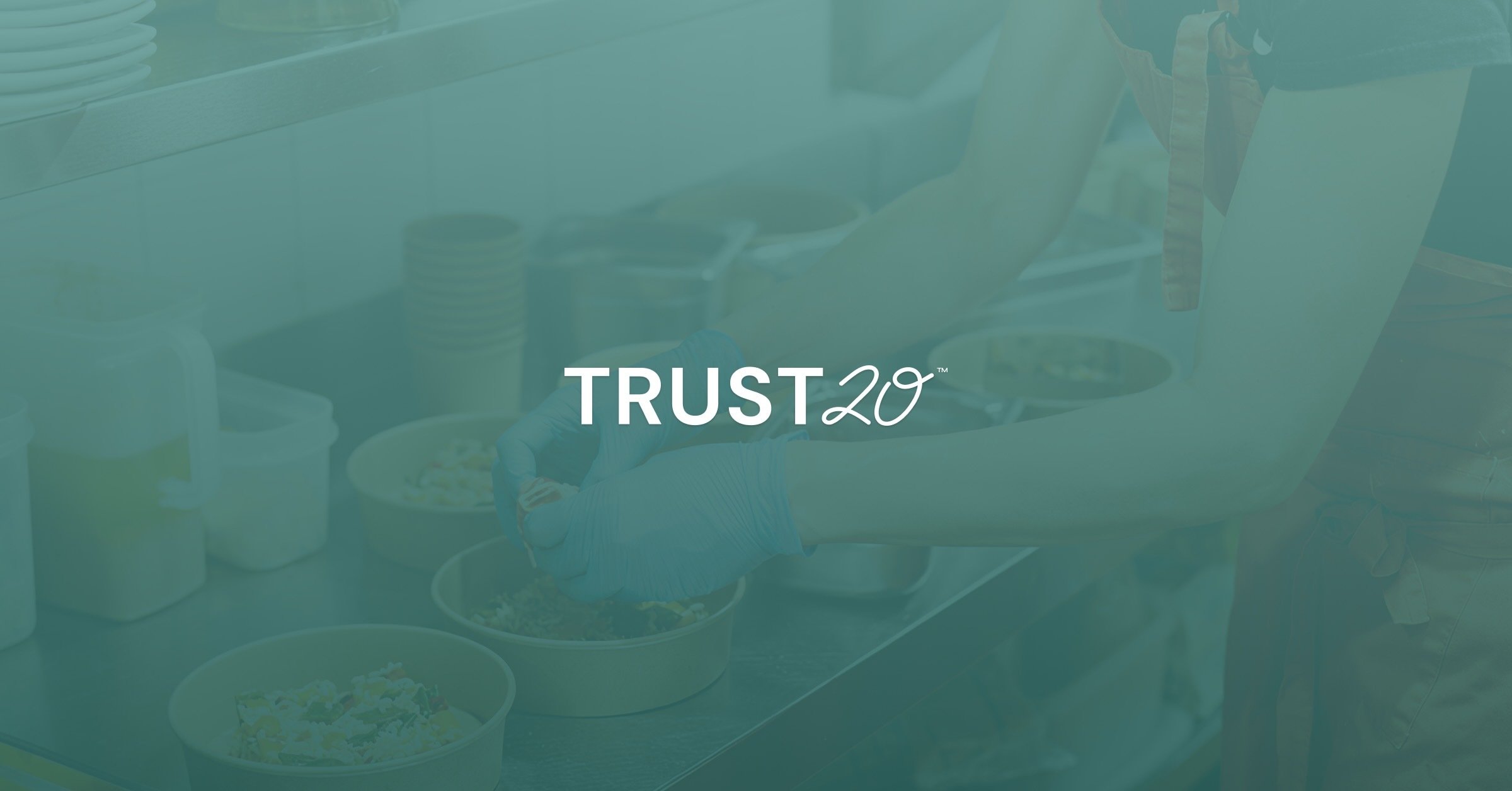You know that food safety is no joke. What’s more challenging is learning how to organize your kitchen and avoid storing foods in a way that could cause cross-contamination.
According to the Centers for Disease Control, about 48 million Americans get sick each year from foodborne illnesses, many of them after eating in restaurants or other foodservice establishments.1 Cross-contamination is, more often than not, the sneaky culprit behind these outbreaks.
To successfully run a foodservice operation, you must be aware of storage practices that can increase the likelihood of cross-contamination.
In this article, we’ll cover:
Which storage practice could cause cross-contamination?
Dotting your food safety i’s and crossing your t’s (the good kind of crossing!)
What is cross-contamination?
Cross-contamination is a term that refers to the unwanted transfer of harmful substances from one surface or food item to another, leading to foodborne illnesses. There are four main types you need to watch out for:
-
Bacterial Contamination: Bacterial contamination occurs when bacteria transfer from one food item to another. Raw chicken juices seeping onto fresh veggies is just one example.
-
Viral Contamination: Viral contamination occurs when viruses move from contaminated surfaces or hands to food. Thankfully, viruses don’t multiply in food.
-
Physical Contamination: Physical contamination involves foreign objects ending up in food–think biting into a crisp salad only to find a piece of plastic wrap.
-
Chemical Contamination: Chemical contamination happens when chemicals, like cleaning agents, find their way into your food.
The first step to preventing cross-contamination is understanding why or how it happens. It often boils down to a breakdown in food safety practices, such as improper food storage or handling.
For instance, storing raw meat above ready-to-eat items in the fridge can lead to contamination from harmful, dripping juices. Cleaning a cutting board you used for preparing raw fish with a quick rinse can lead to contamination from lingering pathogens you can’t see.
Every lapse is a potential pathway for contamination, meaning you must prioritize food safety at every turn.
Which storage practice could cause cross-contamination?
In the foodservice world, one storage mishap can cause a domino effect, where one small mistake topples the entire safety plan. Here are some common storage mistakes that can lead to cross-contamination and what you can do instead.
Storing perishable foods in the temperature danger zone
Temperature controls are essential in the kitchen. Leave perishable foods lingering between 40°F and 140°F, and you're basically inviting bacteria to settle in for the long haul. Foods must chill below 40°F or rise above 140°F to keep microorganisms at bay.
Keeping food out of the temperature danger zone isn’t just about correctly setting your fridge’s thermostat. Consider the time a food spends outside the cooler after receiving a shipment, during preparation, and after meals.
Often, the problem isn't the fridge itself but the time-sensitive dance of taking items in and out. Don’t be caught playing musical chairs with your perishables—ensure they’re stored away promptly!
Remember, the temperature danger zone is a sneaky accomplice to cross-contamination. Those few degrees can be the difference between a delightful dining experience and a food safety disaster. Keep your cool—literally—and maintain proper temperatures to prevent contamination.
Keeping food near cleaning agents
Never store cleaning agents near food. While they might be necessary for sanitizing and disinfecting your establishment, they can also make people extremely sick.
Designate a specific area for all chemicals and make sure that area–and all the chemicals within–are clearly labeled.
Consider, too, the accidental contamination that can happen when you grab a cleaner with the same hand you just used for food prep. Washing your hands between each task should become second nature.
Leaving fruits and vegetables unwashed
Make it a habit to wash fruits and veggies the moment they arrive. This proactive step allows you to do an even closer inspection after accepting a shipment and ensures any contaminants hitchhiking on your produce don’t get a chance to spread.
Remember, even produce with peels needs a good rinse—bacteria can transfer from the peel to the flesh once you cut it. The same goes for organic produce. Organic simply means pesticides weren’t used on a product—not that bacteria or other contaminants aren’t present.2
Storing food items in non-food grade plastic
We all love a good deal, but using non-food grade plastic for storage, while budget-friendly, is a recipe for disaster. These plastics can leach harmful chemicals into food, especially when heated or chilled, leading to contamination.
Invest in proper food-grade containers designed to handle the kitchen environment and keep your food fresh and safe. They’re usually more durable, meaning you’ll save money in the long run.
Storing foods near pest control products
"Why is there a faint chemical scent on this steak?" is never something you want to hear in a restaurant. Storing food near pest control products is a no-go; it’s a guaranteed way to cause cross-contamination.
Pest control products contain chemicals that are toxic if ingested. Even sealed containers aren't immune to contamination from airborne particles, so keep your food as far away from these products as possible.
Designate a separate space for pest control materials, and always ensure you’ve sealed them properly between uses.
Keeping garbage near food
It’s tempting to keep trash bins nearby for convenience, but that just increases the risk of
cross-contamination.
Store garbage bins away from food preparation and storage areas. They should be covered with lids and emptied regularly to prevent odors and leaks from spreading to these areas.
Allowing pests access to food
If pests are getting into your food stores, you have a serious contamination issue. Rodents, insects, and other critters carry many diseases and bacteria that can easily transfer to food.
Ensure you always properly seal food containers and storage areas free from cracks or openings where pests can enter. Regular inspections and professional pest control services can help keep these unwelcome guests at bay.
Also, be aware of the signs of pest activity, such as droppings or damaged packaging. A proactive approach is your best defense against infestations and the contamination they bring.
Keeping meat on the top shelf of the fridge
Gravity can be a problem when raw meat is involved. Any drips or leaks can contaminate the foods below, leading to a cross-contamination catastrophe.
Always store meat on the bottom shelves, wrapped securely. This simple practice ensures that juices stay contained and don’t mingle with other items in the fridge.
If you have the space, use separate sections or drawers for different types of meat to prevent cross-contamination among them.
Storing meat, poultry, and fish with prepared or ready-to-eat food
Meat, poultry, and fish can be big culprits in cross-contamination, especially when stored with ready-to-eat foods. These raw items carry bacteria that can easily transfer to foods that you won’t be cooking again.
Designate specific areas in your fridge for raw meats and keep them well-sealed and separated from prepared foods. Consider investing in color-coded containers to make it easy to identify which items are safe to grab and go.
Keeping dry goods on the floor
Storing dry goods directly on the floor might seem harmless, but it invites all sorts of contamination. Floors can harbor bacteria, dirt, and pests, which can migrate into your food supplies.
Always place dry goods on shelves at least six inches off the ground. Elevating your dry goods storage helps keep them safe from contamination, makes cleaning and inventory counts easier, and helps maintain proper airflow, reducing the risk of spoilage.
Failing to rotate supplies
The first-in, first-out (FIFO) method isn’t just a catchy acronym; it’s critical to preventing cross-contamination and spoilage.
Always rotate your stock to make sure older items are used first. This practice prevents the build-up of expired items, which can harbor bacteria and contaminate fresh supplies.
Regularly check expiration dates and train staff to follow FIFO protocols consistently and accurately.
Not wrapping or covering food before storing
Leaving food uncovered invites bacteria and contaminants to thrive. It also allows flavors and odors to mingle, resulting in less-than-appetizing meals.
Always wrap or cover food securely before storing it. Use airtight containers or heavy-duty plastic wrap to keep everything fresh and safe.
Dotting your food safety i’s and crossing your t’s (the good kind of crossing!)
In the world of foodservice, attention to detail is everything. Proper training can help you and your coworkers (or team) ensure your kitchen practices are top-notch and that you’re confident handling and storing food safely.
Explore Trust20's resources and training programs to stay informed and keep your kitchen running smoothly. After all, knowledge is power–and your first line of defense against cross-contamination.
By prioritizing safety, you'll build trust with your customers and create an environment where you can confidently serve them safe, delicious meals.
Sources:
-
Centers for Disease Control: Estimates of Foodborne Illness in the United States
-
United States Department of Agriculture: Organic 101: What the USDA Organic Label Means






.png)

.png)
